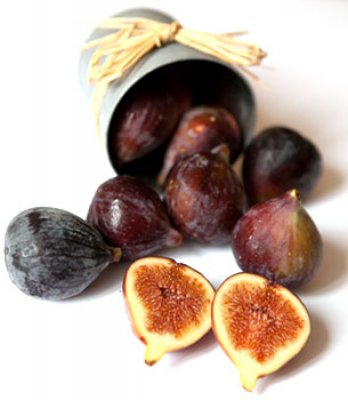Fig, fig tree
 The common fig (Ficus carica) is a species of
The common fig (Ficus carica) is a species of  flowering plant in the genus Ficus, from the family Moraceae, known as the common fig, or just the fig. It is the source of the fruit also called the fig, and as such is an important crop in those areas where it is grown commercially. Native to the Middle East and western Asia, it has been sought out and cultivated by man since ancient times, and is now widely grown throughout the temperate world, both for its fruit and as an ornamental.
flowering plant in the genus Ficus, from the family Moraceae, known as the common fig, or just the fig. It is the source of the fruit also called the fig, and as such is an important crop in those areas where it is grown commercially. Native to the Middle East and western Asia, it has been sought out and cultivated by man since ancient times, and is now widely grown throughout the temperate world, both for its fruit and as an ornamental.
It is a monoecious, deciduous tree or large shrub, growing to a height of 6.9–10 metres, with smooth white bark. Its fragrant leaves are 12–25 centimetres long and 10–18 centimetres across, and deeply lobed with three or five lobes. The complex inflorescence consists of a hollow fleshy structure called the syconium, which is lined with numerous unisexual flowers. The flower itself is not visible outwardly, as it blooms inside the infructescence. Although commonly referred to as a fruit, the fig is actually the infructescence or scion of the tree, known as a false fruit or multiple fruit, in which the flowers and seeds are borne. It is a hollow-ended stem containing many flowers. The edible fruit consists of the mature syconium containing numerous one-seeded fruits (druplets). The fruit is 3–5 centimetres long, with a green skin, sometimes ripening towards purple or brown. Ficus carica has milky sap (laticifer). The sap of the fig's green parts is an irritant to human skin.
Mountain fig or rock fig is a wild fig, naturally growing in the rocky mountainous area of the Kavir desert of Iran, especially in the Khorasan Mountains of Kohestan. The only difference between the mountain fig and other figs is its tolerance of dry and cold climates. It usually does not need any irrigation and is able to survive extremely dry weather and temperatures of −40 °C (−40 °F). Its dry fruit is very delicious. The most productive and the oldest mountain fig trees are located in the Zibad mountains.